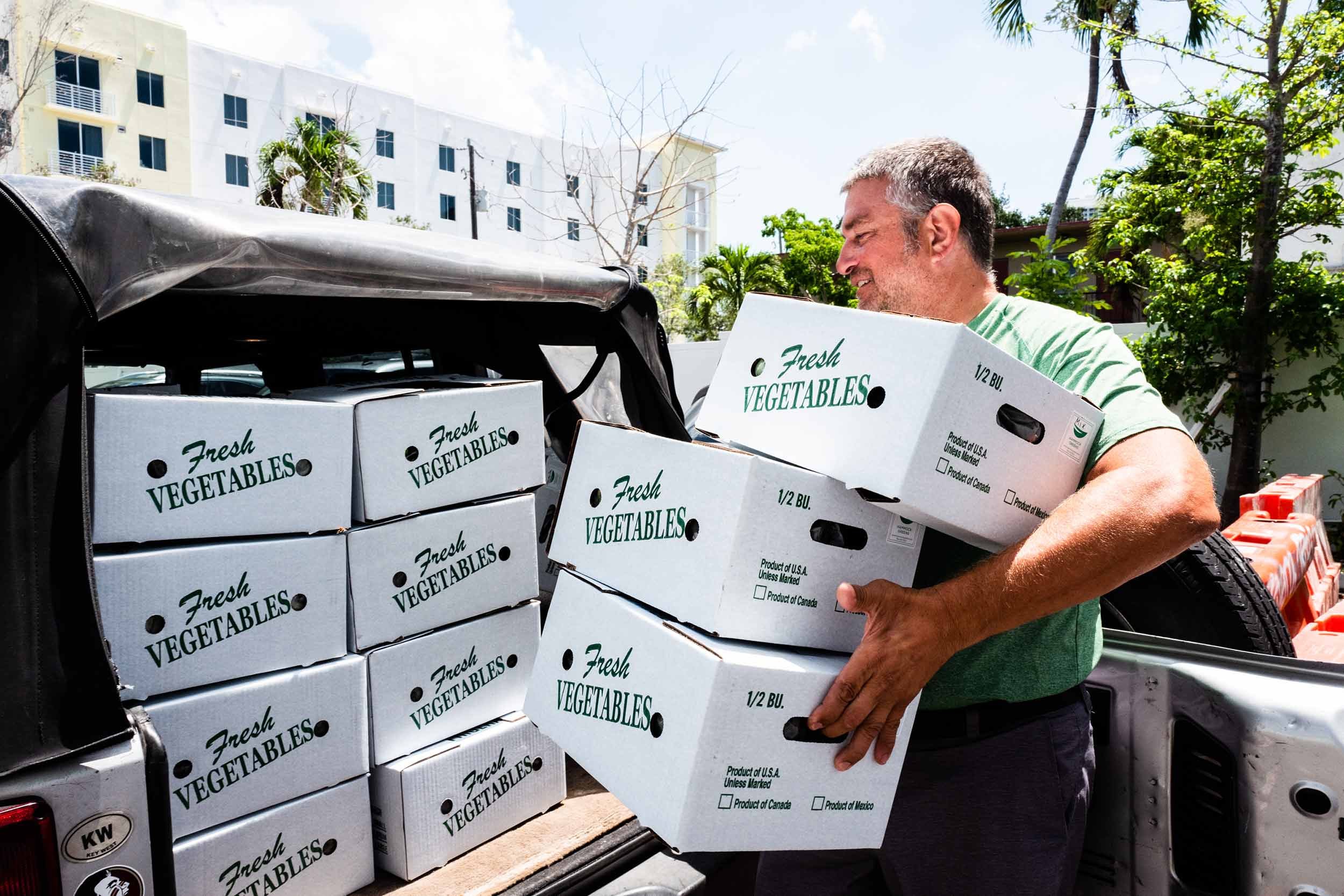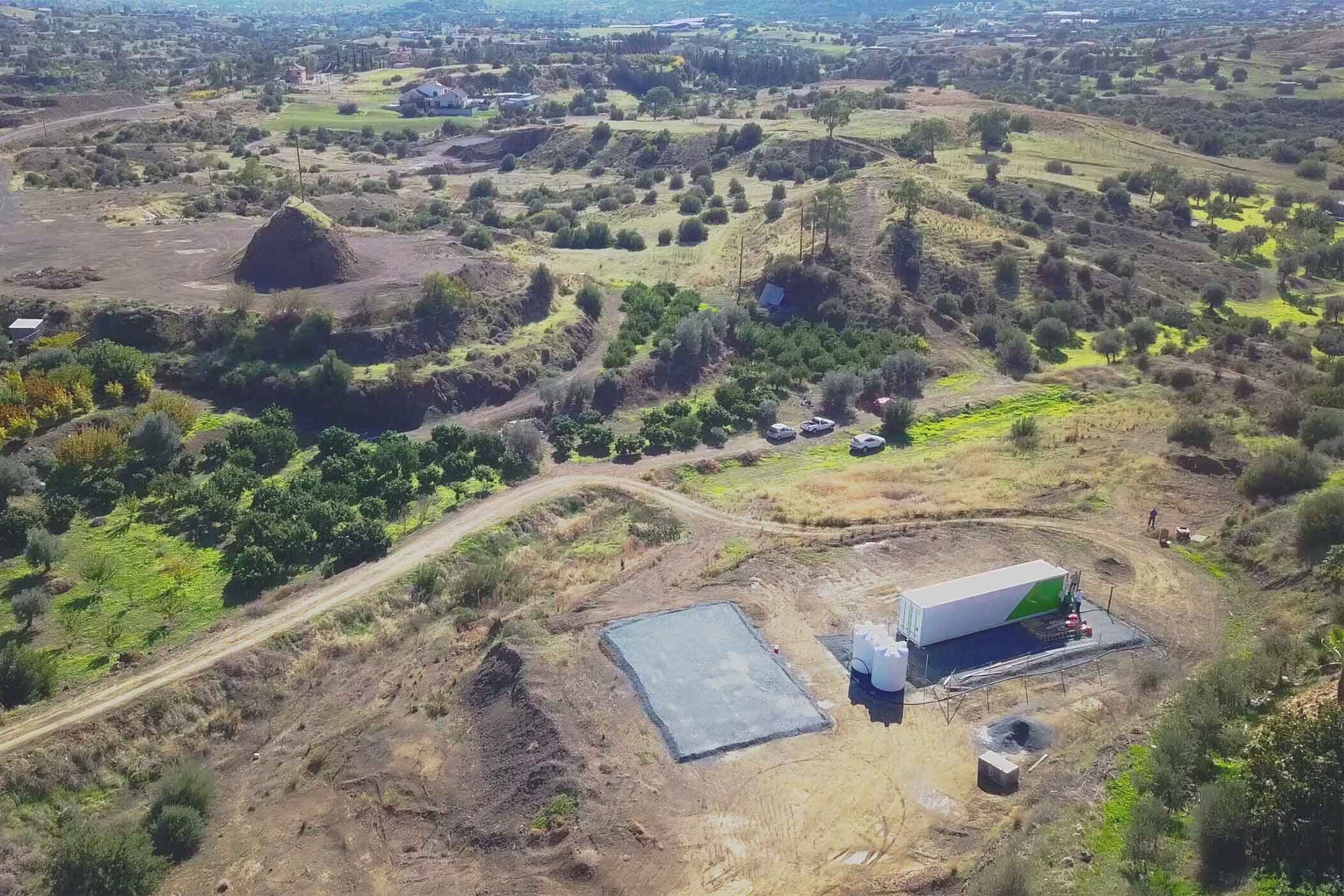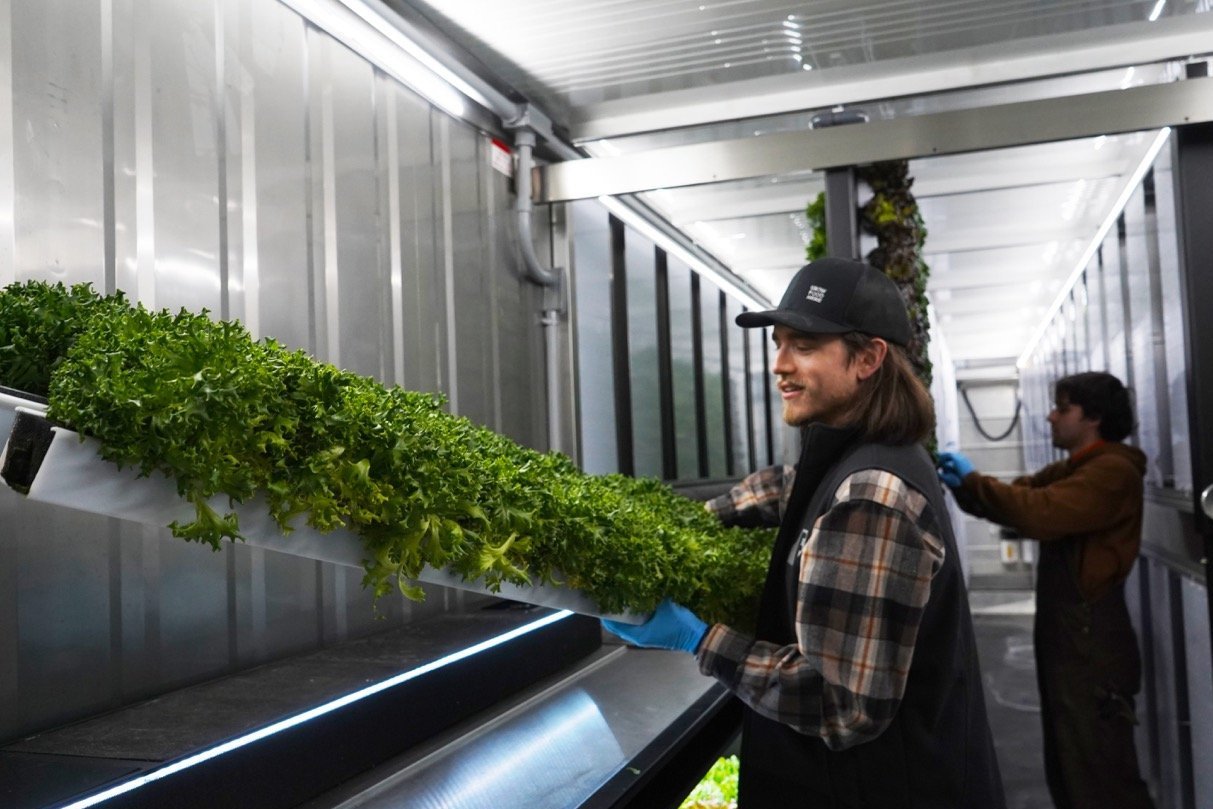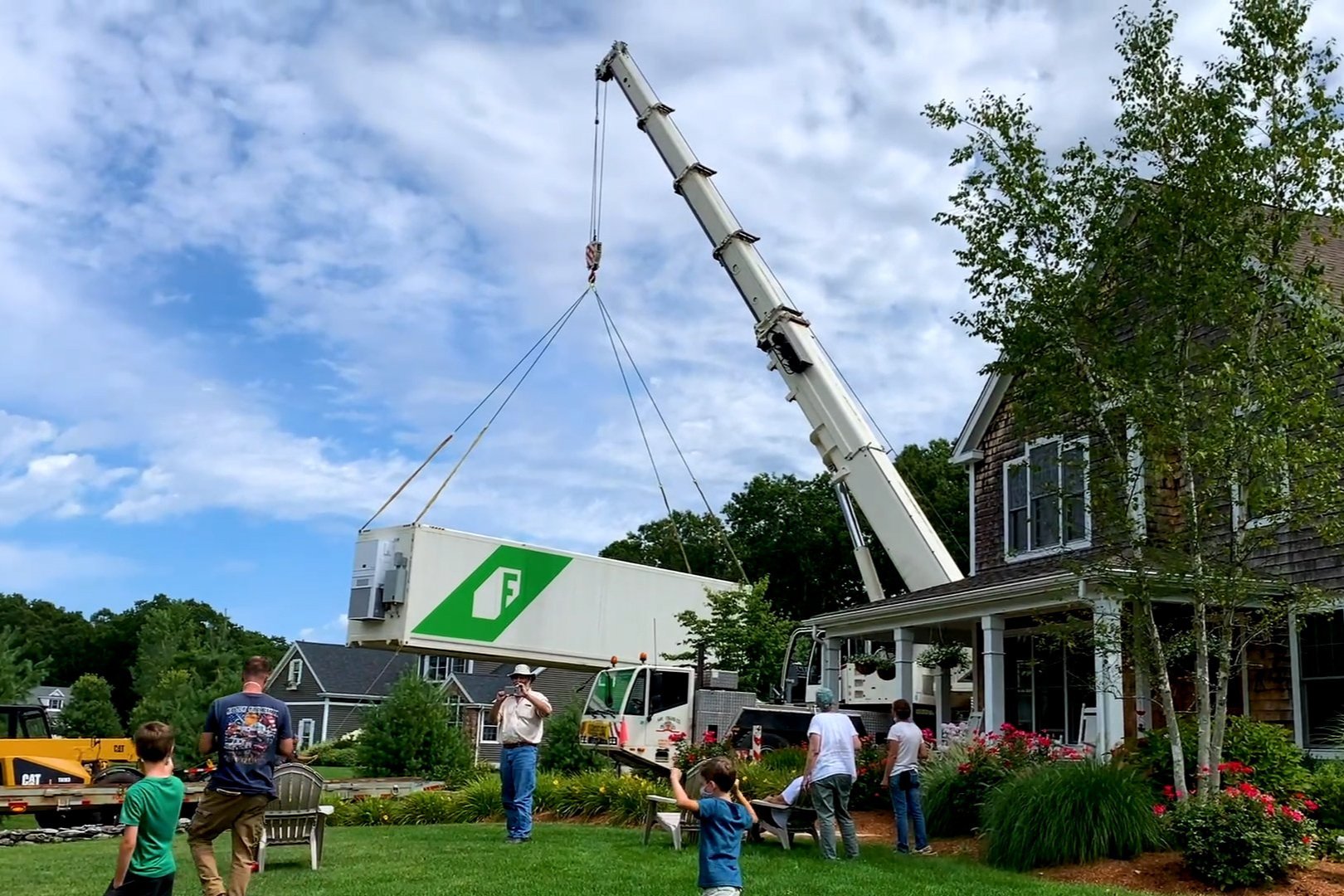How to Start a Farm Business
Here at Freight Farms, our mission is to make it possible for anyone to grow food anywhere —and that includes you! The Greenery™ S simplifies many of the barriers to entry and complicated aspects of farming, allowing people of all backgrounds and experience levels to grow fresh, local, and sustainable food at a commercial scale. The idea is that the less time you have to spend worrying about farm operations, the more you can focus on starting and growing a successful farm business!
It’s important to know that each individual business is unique. There’s no one-size-fits-all business model; what’s more important is crafting the right business for you. But you don’t have to figure it all out on your own; Freight Farms’ Account Executives are here to help every step of the way.

8 Steps to Launching a Farm Business
Step 1: Understand the Hydroponic & Local Food Market
Although the hydroponics and indoor farming industries have matured over the past years, hydroponic container farming may still be an unexplored concept in your community. Spend some time doing research on what food options and markets currently exist in your area, and identify the local markets that could be potential customers for your business. Answering these research questions will help you understand how to leverage your new hydroponic farming business better in your community, and will make writing a business plan much easier.

-
What competitors to my future business exist? (Other hydroponic growers, other large-scale producers, etc.)
Are there hyper-local produce options already available to consumers?
What are the trends at restaurants in my area? Has there been a rise in farm-to-table concepts?
How many farmers markets are there in my area?
What are the local grocery stores like? Do they sell hydroponically grown or local produce? How do the prices of these products compare to conventionally-grown plants?
Are there CSA (Community Supported Agriculture) programs in my area? (If yes, and they’re successful, this indicates people are willing to buy from farmers; if no, this indicates a need for such a program.)
-
Are there restaurants that specialize in vegetarian or plant-forward food?
Are the farmers markets in my area well-attended?
Are locals seeking more local, fresh food options?
Learn more about market research and identifying customers.
Get to know and become a member of the community that you want to serve. Join a CSA, go to the farmers market, be a patron at the restaurants you want to work with, introduce yourself to community organizers. You’ll learn so much about your different markets, and more importantly, they’ll know who you are as a person, not just as a business.

Step 2: Research and Write a Business Plan
After your research, hopefully you’ve identified a few target customers, which will ultimately guide your entire business strategy, including operational costs, distribution channels, and what kind of plants you will grow. If you’re still not sure what crops to grow, your Freight Farms account executive is here to help you think it through.
Learn more about choosing crops.
The three most common customer segments are restaurants, grocery stores, and direct-to-consumer (CSAs, farmers markets, and e-commerce). Each segment has its own associated costs, which you will outline in your business plan.
For guidance on business planning, visit our Project Planning Center.
Step 3: Get Farm Financing
A strong business plan is your best tool for securing financing, whether from a partner, a bank, or the government. When it comes to the Greenery S, there are two main types of loans you can go for: an equipment loan or an operating business loan.
We’ve outlined all the major options in our guide to farm financing.

Step 4: Find a Farm Site
This is an incredibly important step, so be proactive and start asking the right questions as soon as you start to seriously think about buying a farm. Zoning, with regulations that vary based on local government, can present a challenge. When in doubt, don’t hesitate to contact us or a local alderman to get specific information.
Learn more about zoning and finding a site for your container farm.
Step 5: Make Your Farm Purchase
Take the plunge and join the Freight Farms family! We’re committed to helping you start a successful farming business: As soon as you purchase a farm, we’ll introduce you to our Client Services team. They’ll support you through resources and training so you’re ready to start farming as soon as your container farm is delivered.
Learn more about support.

Step 6: Container Farmer Training
Get ready to farm! Start on your path to success with one of our training options:
Farm Camp is a two-day intensive training at our headquarters in Boston, MA, where we combine in-farm sessions and classroom lessons. Farmhand® Academy is an online training course that allows you to learn on your own time and from the comfort of your own home. Finally, with an Onsite Launch, a member of the Freight Farms team will come out to your site to help you set up and launch your farm and provide you with one-on-one training.
Learn more about training options.
Step 7: Launch Your Farm
Work with our Client Services team to prepare your site for the farm’s arrival. We take care of all the delivery planning and logistics, so all you have to worry about is making sure your site is set for your farm’s arrival and continuing to develop a customer base. Once the Greenery S arrives, install the equipment that arrives packaged inside the farm (like the water pumps, plant panels, farm sensors, and grow racks), hook up your farm to electricity and water with the help of a trusty electrician and plumber, set up the farm WiFi, and voila! You’ve launched your farm.
Learn about farm sites and delivery.
Step 8: Grow Your Business
After training, you will have all the tools necessary to successfully start farming. Don’t worry about making mistakes initially — it takes time to become familiar with all of the farming processes, figure out just how to sell to the right customers, and find your rhythm. Give yourself a few months to become a farming expert.
Thanks to the efficiency of the Greenery S, you will be ready to harvest your first crops eight weeks after launching the farm. We estimate that you will need to spend about 20 hours a week maintaining the farm; these hours can be handled by one person or split between a team.
In addition to our training resources, we have lots of information available to help you achieve success on our blog and Project Planning Center.

Get to know your peers! The best thing about being a Freight Farmer? You’re not alone! You belong to a great community of farmers from all over the world, and they are a valuable resource for you as you start your farming business. Once you’ve purchased your farm, be sure to join farmhand Community to connect with the network of Freight Farmers.
Until then, check out these tips for success from other Freight Farmers.
For all of these steps, the best place to start is our Project Planning Center. There, we walk you through the process of planning your farming business and connect you to several resources, including the most valuable of all: our knowledgeable Account Executives, who are here to support you through this journey.
Visit the Project Planning Center
Related Articles
Zoning 101: How to Navigate Zoning for Your Container Farm
If you’re interested in bringing a Greenery™ to your community, you must familiarize yourself with local zoning regulations. In this article, we cover the zoning basics and our 7 tips for successfully navigating zoning laws to implement your container farm.
Beginner’s Guide to Hydroponic Farming in the Greenery™
In this guide, we break down the four steps to completing a crop cycle in our hydroponic container farm and the labor requirements you can expect.
Hamilton Horne’s Top 10 Tips for How to Sell Produce to Restaurants
Hamilton Horne is the highly successful entrepreneur behind King Tide Farms, a Freight Farming business in Charleston, SC. He sells produce to the city’s high-end restaurants, whose chefs love the microgreens, flavorful leafy greens, and herbs that he grows. Building relationships with chefs can be intimidating, so Hamilton is giving us his tips for how to sell produce to restaurants.
Day in the Life: Enhanced Farming With Farmhand Software
Farmhand, Freight Farms' farm automation software, makes farming manageable. This critical tool is one that every Freight Farmer should take advantage of. It allows you to remotely monitor and control your farm, plan farm tasks, coordinate farm operators, collect key farm and harvest data, and analyze data to understand and optimize farm operations. Around the clock, it's a farmer's best friend!
14 Awesome Female Leaders in Agriculture
This International Women’s Day, we’re celebrating the women in farming — growers, entrepreneurs, leaders, and disruptors — who inspire us every day. These female leaders in agriculture have gone above and beyond to bring positive change to food and agriculture in communities all over the world!
Farming in Extreme Climates is Easy with Controlled Environment Agriculture
Ever wonder how Freight Farmers around the world all grow food year-round, regardless of the season or conditions? The secret is advanced climate control and insulation to create a perfect controlled environment agriculture platform for indoor farming. Thanks to these systems, Freight Farms can continue to grow, even in extreme heat or surrounded by piles of snow.
Introducing Our New Hydroponic Nutrients!
We recently released a new line of hydroponic nutrients! Our in-house team of plant scientists worked diligently to curate and test these new and improved hydroponic nutrients: farmhand form, grow, and boost. Over 160+ trials, the new farmhand nutrients were tested against a comparable competing nutrient blend and showed a 30% yield increase, on average. What makes them so powerful? We break down the three-part formula.
Why 2023 Is the Year To Start a Hydroponic Farming Business
We’re examining the latest national and global trends. Good news! They indicate that 2023 is a great year to start hydroponic farming. From food safety to local purchasing and supply chain to healthy eating and environmental sustainability, recent studies and events suggest that now is the time to start a hydroponic farm.
16 Reasons to Start Container Farming
Container farming gives you a better work-life balance and an active and relaxing work environment — plus 14 other great perks! The Greenery S indoor farm is the perfect platform to change your life.
8 Steps to Launching Your Farming Business
Anyone can farm! All you need to do is follow this eight-step journey, from crafting a business plan, to training, to growing the business.
How to Maximize Your Nursery Station with Microgreens
Want to learn about how to grow microgreens and maximize your revenue while you’re at it? Well, you probably know that Greenery™ S farms have two grow areas: the Nursery Station (where seedlings sprout) and the Cultivation Area (where plants mature). It just so happens that the Nursery Station has some extra room. Why not use this space for growing microgreens to make some extra income?
6 Things to Consider When Packaging Your Crops
Learn about 6 important things to consider when packaging your crops. We've compiled some resources to help you determine how to package hydroponic crops and what kind of packaging best suits the needs of you and your customers. We cover value propositions, branding, vegetable preservation, customer segments, and more.
8 Ways to Put Your Container Farm to Good Use
Do you like the idea of becoming a Freight Farmer, but feel held back because you aren’t sure what you’d do with your farm? Not to worry! We’ve compiled a list of just some of the great ways our farmers are using Freight Farms to cultivate fresh produce while also doing good.
8 Different Types of Produce Packaging
You may know what crops you’d like to grow…but how should you package them? Every farmer has preferred methods of packaging — and a journey to figuring out exactly what they are. We’re exploring 8 of the most popular produce packaging types for Freight Farmers and growers beyond the shipping container farming industry, and the customer segments they’re best for.
The Freight Farms Guide to Finding Customers
Thinking about launching a Freight Farms project in your city, town, or community? We’re sharing 5 tried-and-true tips to find customers in four historically successful sales channels: CSA, farmers markets, restaurants, and grocery stores. Learn how to pitch your produce and value propositions to customers in each segment for a successful business plan!
Why 2022 Is the Year to Start Growing Local
National and global trends show that the public is more inclined than ever to eat local and healthily, and environmental conditions are consistently becoming more extreme. Plus, funding related to hydroponics and small food businesses is up! Learn more about why there's never been a better time to start.
Creative Places to Put a Container Farm
Discover some outside-of-the-box locations to place a container farm. As our network of Freight Farmers continues to expand globally, the range of spots we’ve seen farmers place their containers is growing just as quickly — and we don’t just mean backyards and driveways.
Why Shipping Container Farming?
Shipping container farms allow for anyone to grow food, anywhere. These revolutionary farms are the key to unlocking local food production in every corner of the globe and decentralizing our food system for the future.
Controlled Environment Agriculture in the Greenery S
Controlled Environment Agriculture (CEA) dictates that the right combination of light, carbon dioxide, temperature, humidity, water, pH levels, and nutrients makes it possible to grow healthy crops any time of the year.The Greenery takes controlled environment farming to the next level by combining state-of-the-art farm components with smart sensors and farm app integrations.
Using Indoor Grow Lights in the Greenery™ S
We explore how LEDs can be used to replace the sun and grow strong and healthy plants indoors. Our comprehensive article covers photosynthesis, types of indoor grow lights, ways of measuring power, and the effect of color on plant health.
Vertical Farming in the Greenery S
See how the Greenery S uses vertical farming to maximize all the space inside its 320 sq. ft. footprint! Together, vertical farming and smart crop scheduling makes it easy to get consistent and plentiful harvests all year long.
Why Chefs Prefer Hydroponic Produce
We asked chefs and Freight Farms customers about what makes hydroponic produce the best option for the restaurant industry. Across the board, chefs love the distinct flavors, fresh textures, and longer shelf-life.
This family is farming to make Cyprus a self-sufficient island
The Timveos-Oxtoby family is committed to bringing fresh food to the arid island of Cyprus! They see their hydroponic farm as a direct way to combat the island’s drought-prone climate and dependence on imported goods!
A campus farm changed Jack’s life–now he’s paying it forward
When Jack Levine first started college at Clark University in Worcester, Massachusetts, he had never heard of container farming, let alone imagined it as a career. Today, he’s paying the experience forward by bringing sustainable indoor farming to schools and organizations around the state.
How to keep your small farm business profitable during COVID-19
With restaurants across the country closing or drastically reducing their services, the small farmers who depend on the food industry are suffering. Freight Farms explores how these farmers can stay profitable during these uncertain times by quickly pivoting to a number of direct-to-consumer strategies, including CSAs, “drive-through” farmers markets, and more.
Clawson Greens Supplies This Snowy Tourist Town with Local Produce, Year-Round
Clawson Greens has made the impossible, possible. By growing food indoors using three hydroponic container farms, Dave Ridill has been able to grow fresh greens year-round in Teton Valley, Idaho–a snowy region of the country that typically has a growing season shorter than 3 months. Dave shared his secrets to success with the Freight Farms team in a Q&A!
Plant Cloning: 4 Easy Steps to Get Started
While most of us think about a plant growing from seed, there’s actually another way...cloning! Cloning might sound like a complicated process involving mad scientists, but it’s actually quite simple. Learn how to clone any plant in 4 easy steps.
Nutrients 101: Growing Strong Hydroponic Plants
Let's talk about nutrients! Sounds complicated, right? Well, we won’t lie, there are a lot of factors involved in giving plants the ideal combination of nitrogen, phosphorus, potassium, and other necessary nutrients. The good news is that getting it right in the Greenery S is easy!
How to Run a Successful CSA
Running a successful CSA is easier said than done. Expert farmer Sarah Ward shared her experience operating a CSA with Freight Farms in a recent webinar. We summarized the entire conversation so you can start a CSA too.
Scaling an Urban Farm: How Hammock Greens Operates 6 Farms in Miami
On July 29th, we hosted a webinar with Hammock Greens to learn how two restaurant industry insiders transitioned into equally successful careers in hydroponic farming, growing their urban farming business in Miami to six farm in just two years.
Guides, Small Business, Business and Operations
Guest User
Business Development, Small business farms, Freight Farms, Farming as a business, Small business
30 Comments
